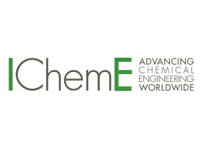 |
A computer modeller might not be your idea of Australian hero, but when it comes to bushfire planning, Dr Guan Heng Yeoh’s work behind the scenes, modelling the direction of fires, is vitally important.
The Australian Nuclear Science and Technology Organisation’s computer modeller is to be recognised with a prestigious Brennan Medal by the UK’s Institute of Chemical Engineers. The award recognises the best book published by the Institute each year.
The prize confirms Dr Yeoh’s status as one of the world’s foremost experts in computational analysis. He sits on the Fire Research Advisory Committee and a number of academic institutions to consult on modelling the direction of fires.
His book, entitled Computational Techniques for Multiphase Flows, examines the mixed or multiphase flows of substances commonly found in many industrial fields. According to Dr Yeoh, their behaviour is complex and difficult to predict in many cases.
Proactive modelling of responses when conditions change at a nuclear reactor, for example,, or a large chemical plant, is of vital interest to those running the operation This is where computational analysis becomes an important tool in enhancing safety, reliability and optimising operating margins – techniques that were simply not available before.
It is believed that Dr Yeoh is the first Australian to win the award for his book, written in between working on his day job at ANSTO, and fulfilling his role as a father of three young daughters.
Dr Yeoh is also the author of an international standard textbook for undergraduates entitled: Computational Fluid Dynamics – A Practical Approach, and, more recently, Computational Fluid Dynamics in Fire Engineering, which reflects his interest in using computers in fire protection and emergency management.
Dr Yeoh says that computational fluid dynamics is emerging as a powerful tool with numerous applications in the chemical, petroleum, mining, food, beverage and pharmaceutical industries.
“This field has become more widespread as computers have become more powerful. Because of this, we are able to put more information into our models, which means we can expect future work in this field to include fewer approximations and much more physics,” Dr Yeoh said.
Published: 02/03/2010

